Have you ever pondered the meaning behind the plant’s common name, the prayer plant? It is because the leaves of a prayer plant have a fascinating characteristic! They move! During the day, the leaves of prayer plants will change so that they point upwards as if the plant is saying a prayer.
While many are aware of prayer plants’ vibrant leaves and graceful movement, fewer are aware of their beautiful blossoms. In this article, let’s talk about prayer plants blooms.
So, what exactly do these flowers look like, and how can one bring a prayer plant to full bloom?

The flowers of the Prayer Plant are typically quite dainty and can be either white or purple.
The flowers of prayer plants are typically quite delicate, white or purple, and very small. The plant’s flowering period coincides with its active growing season, which is summer and spring. And there is something very peculiar about these flowers.
Even though the flowers on a prayer plant are not poisonous, they can prevent the plant from producing new leaves and cause the older leaves to fall off prematurely.
Read on if you want to learn more about these rare flowers.
What Is A Prayer Plant?
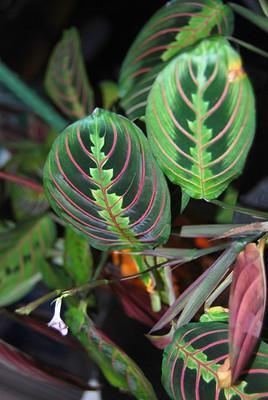
The prayer plant, or Maranta leuconeura, is a small, South American tropical plant.
The prayer plant’s natural habitat is the tropical woods of Brazil, where it is found as a sprawling, low-growing plant that covers the entire forest floor.
The distinctively patterned and colorful leaves of these plants appear in various colors, including green, white, and red, and are one of the plants’ most recognizable characteristics.
They also have lovely foliage, which consists of ovate, broad leaves that contain veins of varying hues that are apparent to the naked eye. The veins extending to the leaf margins are typically a different color from those running through the leaf’s center.
The fact that prayer plants are non-toxic makes them an excellent choice for households that are full of youngsters and/or pets. They also do an excellent job of cleaning the air by removing a considerable amount of carbon dioxide.
Lastly, there is a wide variety of prayer plants to choose from, and growing them is a breeze.
Related: How To Propagate And Care For Prayer Plants | A Comprehensive Guide
Prayer Plant’s Bloom
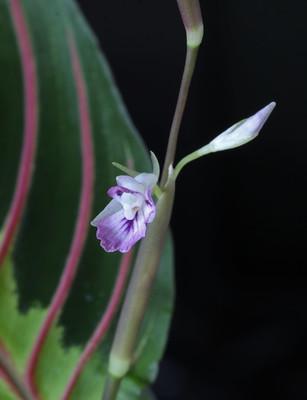
While flowers on long stems are unusual on an indoor prayer plant, they occasionally appear.
Prayer plants produce blossoms so that they can create seeds. This occurs when the environment is just right for developing new prayer plants. Even though it is not very frequent, prayer plants can produce flowers even when they are kept inside.
The prayer plant develops long, slender stalks with blooms at the end of each one when it is in bloom. Each inflorescence of the prayer plant bears two pairs of tiny flowers ranging from white to purple. Due to the fact that each blossom is bilaterally symmetrical, they take on the appearance of snapdragons or sweet peas.
Gardeners of prayer plants typically harvest only a few flower stalks from the plant before it entirely stops producing flowers. However, others have mentioned coming across a large number of blooms that required constant maintenance and cleaning.
This can vary depending on the size of the plant as well as its current health.
When Do Prayer Plants Bloom
Prayer plants, like many other plant species, go through periods in which they are either actively developing or dormant. In reaction to the shifting of the seasons, most new growth occurs during the warmer months.
Therefore, the months of summer and spring are typically the times when an indoor prayer plant will produce its distinctive bloom.
Knowing that a prayer plant does not continuously bloom when grown is essential.
Based on their observations, many have stated that during the growth season, their plants produce very few flowers, if any at all. If your prayer plant has a large bloom, it indicates that it has been given adequate attention and care.
Should You Let Your Prayer Plant Bloom
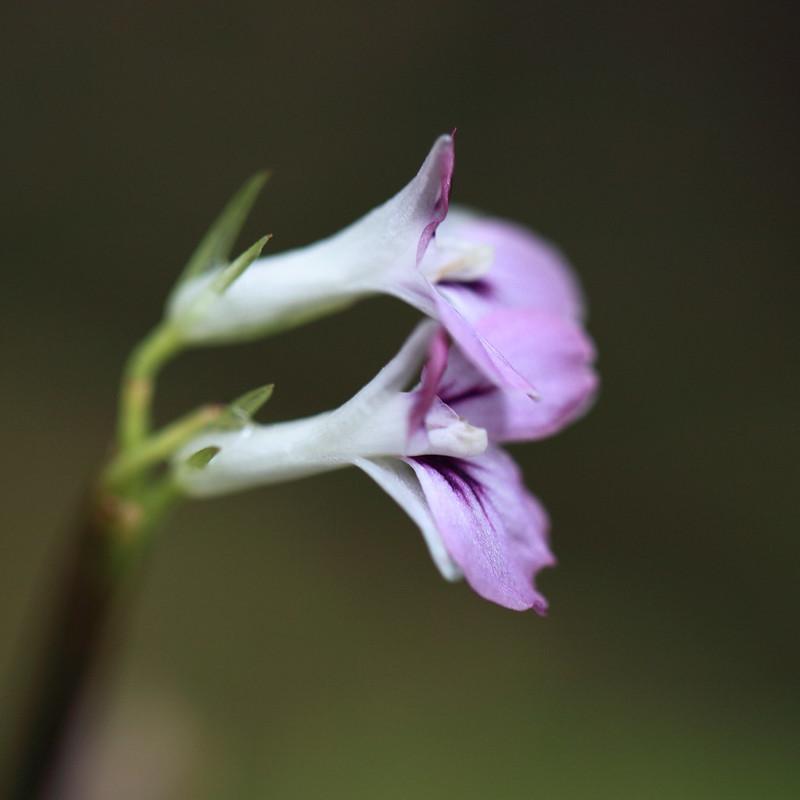
Marantas are attractive even without flowers, but when they bloom, they’re stunning.
It is totally up to you to decide whether or not your prayer plant should be allowed to blossom. Having said that, there are a few key factors that one must not forget. The flowers possess a rare and exquisite beauty.
The stunning vegetation, on the other hand, which is noticeably more vibrant and appealing, quickly casts a shadow over them.
If you are simply interested in the foliage of prayer plants, you could choose to prune them to prevent them from flowering. The flowering of your maranta won’t do any harm to the plant, but it could limit the plant’s growth.
This is because when your plant flowers, it diverts some of its energy away from the development of leaves and toward the development of flowers instead.
As a direct consequence of this, there is a possibility that less foliage will grow, and some of the already present leaves may wither away.
In spite of this, the flowers of the prayer plant are really breathtaking. Even without flowers, marantas have a stunning appearance, but when they bloom, their beauty is elevated to an even higher level.
The large leaves of the prayer plant create a striking contrast with the plant’s dainty blooms, which, combined, can lend your collection a splash of additional color.
Flowering does not harm the plant in any way, so if you are not concerned about the leaves changing, you may find it enjoyable to watch the plant produce its tiny flowers. Also, the biological cycle of flowering indicates that the plant is doing well and growing.
Do Prayer Plants Produce Seeds?
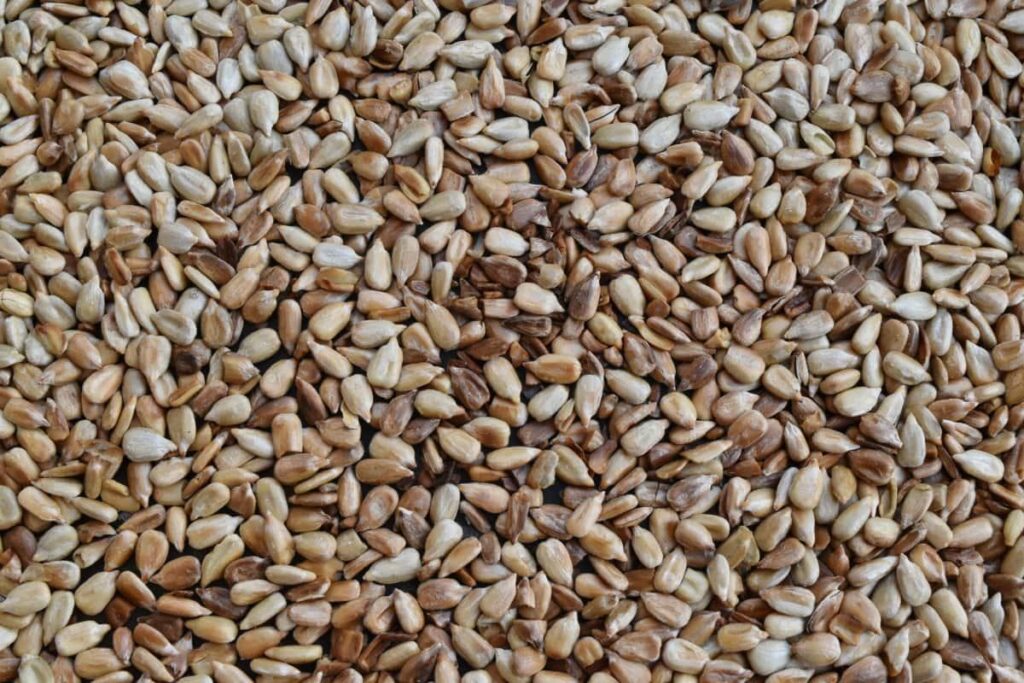
Following pollination, prayer plants, like all other flowering plants, produce fruit in the form of seeds.
They certainly do! In fact, every plant that flowers also produces a seed. However, why would anyone be interested in the seeds of the prayer plant in the first place? The answer is simple! To grow more prayer plants.
You can establish new prayer plants if you are willing to put in the necessary time and effort to gather the seeds from existing prayer plants.
However, because the seeds are so minute, the process of collecting them will be difficult. Additionally, as indicated earlier, prayer plants’ blossoms are exceptionally rare. As a result, harvesting seeds that produce live plants is quite challenging.
Related: Losing Faith in Your Prayer Plant? How to Save Your Curling Leaves
Caring Tips For Prayer Plant
These low-growing, spreading prayer plants thrive in conditions similar to greenhouses, including mild temperatures, high humidity, and gentle airflow. However, prayer plants, like all other types of houseplants, require attention and care regularly.
For instance, due to the soil’s inability to drain properly, the plant may wither and die from root rot. Similarly, plants subjected to an excessive amount of sunshine may have their vibrant color bleached out of them and develop dark blotches on their leaf surfaces.
There is a wide range of prayer plants, but the care that should be given to each of them is essentially the same. In either an indoor or outdoor setting, the following are some best practices for taking care of a prayer plant:
Sunlight
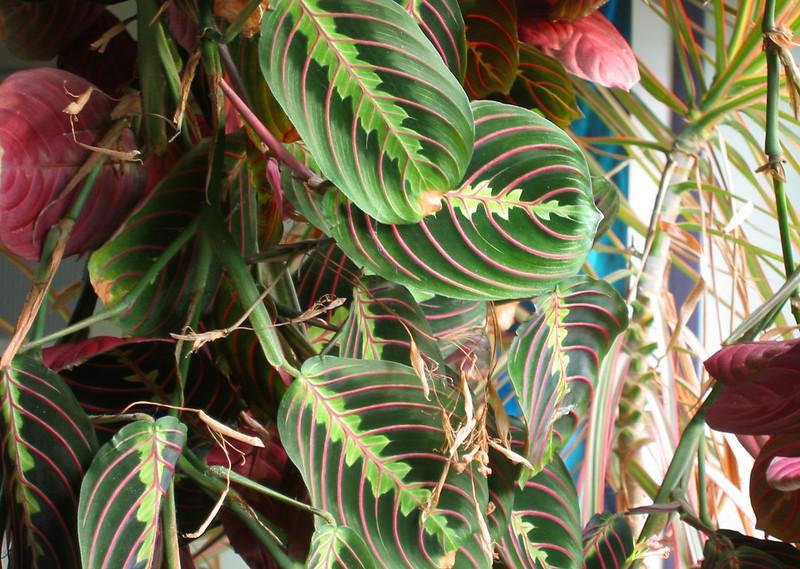
Prayer plants do well in dark, warm locations rather than in direct sunshine.
Your prayer plant needs to be placed near a window for it to receive some filtered light from the sun. Never put your plants where they will be exposed to direct sunlight because doing so can cause the leaves to get discolored, develop spots or blotches, and even burn.
If the color of the plant’s leaves begins to change, this is a sign that the plant is exposed to excessive sunlight. It would help if you didn’t put them in absolutely dark areas either, because the leaves won’t be able to open all the way in such situations.
If you want the plants to continue developing over the winter, when they are in a dormant state (and may even completely lose their leaves), you need to expose them to bright light.
Don’t Overwater
Prayer plants require consistent watering throughout the day. You should never let the soil become completely saturated with water, but you should always keep it moist. When watering the prayer plant, make sure to use warm water or, at the very least, water at room temperature.
The amount of water applied to plants should be reduced but not eliminated entirely during winter. You should also make an effort to keep your prayer plant from receiving an excessive amount of water.
An overwatered plant is more susceptible to developing root rot and fungus problems and having its leaf tips turn yellow and fall off.
Temperature And Humidity
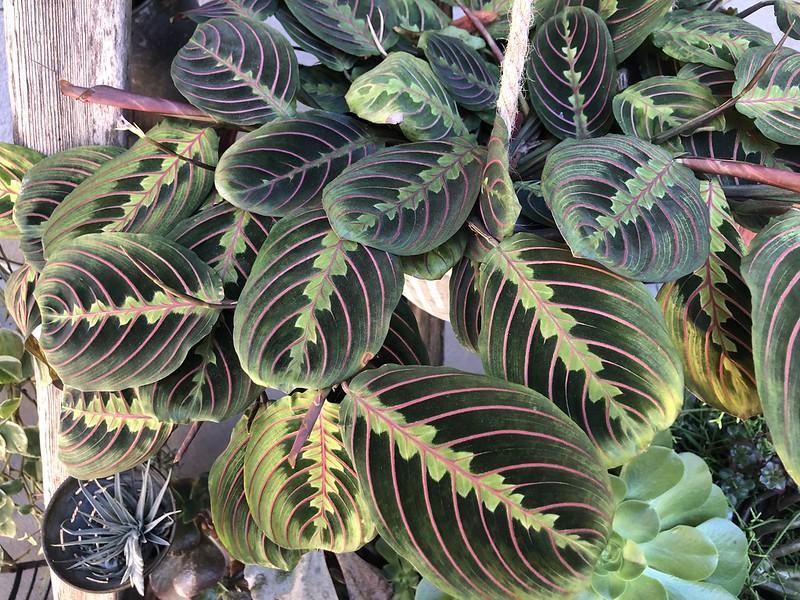
Prayer plants thrive in the typical range of 60 to 80 degrees Fahrenheit found in most homes.
Temperatures from sixty to eighty degrees Fahrenheit are considered the most favorable for prayer plants. When prayer plants are grown outside their specific growing regions and hardiness zones, they may require the use of a humidifier in order to maintain an adequate level of moisture within the indoor growing space.
If the tips of the leaves are brown, this could indicate that the environment is too dry. A mini humidifier or a tray with water and pebbles might help increase the humidity around your plant.
You can also mist the leaves with either warm or room-temperature water if you do not have access to a humidifier or cannot afford one.
Additionally, compared to other rooms in the house, bathrooms have a higher relative humidity, making them an ideal environment for houseplants, such as prayer plants.
Soil
In most cases, a regular potting mix will do the trick, but you can also build your own by combining equal parts of loamy soil, sphagnum peat moss, and either perlite or coarse sand in a large mixing container. If the soil’s pH is also 6.0, that will be the best possible scenario.
Be mindful, though, that excessive application of perlite can lead to fluoride burns, which in turn can cause the leaves to develop a brownish-yellow color. Therefore, if you are considering repotting your plants, the best time is during the first few weeks of spring.
Just ensure that the container has holes in the bottom for drainage and that the potting mix you use is airy and has good drainage.
Fertilize Regularly
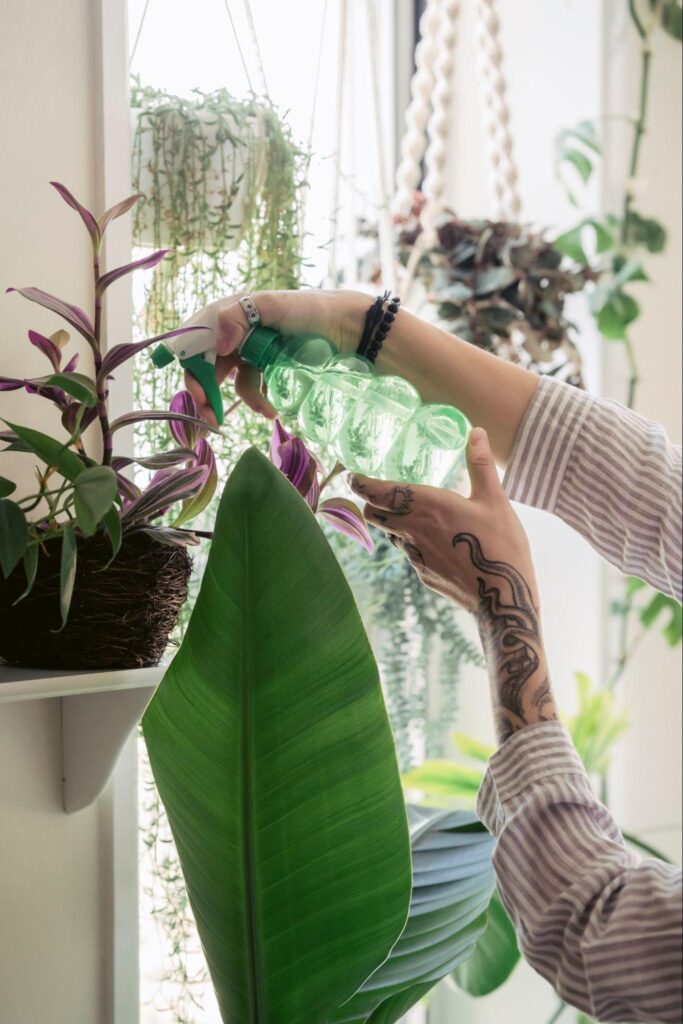
Maintaining a consistent fertilizing regimen can help your prayer plant flourish.
A water-soluble houseplant fertilizer should be used at your prayer plant approximately once every two weeks during the growing season, which typically extends from the late spring to the early fall months. The plant requires fertilizer only once every month throughout the winter months.
If you don’t give your plant enough fertilizer, it may not grow at all, or it may grow very slowly. On the other hand, you may want to dilute the fertilizer so that it is just half as strong because an excess of fertilizer can also cause the plant’s leaves to turn brown and may even cause the plant’s death.
Treat pests and disease
Caution is the first necessary step! Pests like spider mites, aphids, and mealybugs can easily infest prayer plants if they are not properly cared for. As a result, it is imperative that brand-new plants be inspected thoroughly before being brought inside.
Neem oil can then be sprayed on the plant in a very light mist as a second stage in the process of removing any potential infestations. Fungus in the roots of prayer plants is a widespread ailment that can harm these plants.
This occurs directly from the soggy ground and the muggy atmosphere around it.
Therefore, as a precautionary measure, you might want to perform routine checks on your prayer plant to ensure that it has not acquired any problems due to receiving excessive water.
Related: How To Propagate Rubber Plant: Things To Know Beforehand
Conclusion
Prayer plants, or Maranta leuconeura, are easy-to-grow houseplants, also referred to as red marantas. These plants have skyrocketed in popularity among people who are passionate about houseplants.
However, although marantas are mostly valued for the vibrant and intricate patterns found on their leaves, this tropical beauty is also capable of bearing flowers, given the right conditions. We hope that the prayer plant care tips and other information offered in this article will help you take better care of your plant and make it flower.
Frequently Asked Questions
Why is my prayer plant flowering?
If you are blessed with a large bloom from your Prayer Plant, this is a sign that the plant is content, healthy, and receiving excellent attention from its owner. In the wild, prayer plants must bloom to be pollinated, make seeds, and continue their species.
What do you do with prayer plant flowers?
Producing flowers requires a lot of energy from the plant, so if you notice that blooms are starting to emerge on your prayer plant, remove them before they are in full bloom so that your plant can use its energy toward producing large, vibrant leaves instead.
Should I prune prayer plant flowers?
When you prune a prayer plant, you can remove any dead leaves or stems that are getting too long. Therefore, prune your prayer plant by making cuts with a pair of garden shears that have been thoroughly sanitized just above the leaf nodes. Bushy growth can also be encouraged by pruning the plant twice or three times per year.
How do I know if my prayer plant is happy?
Healthy Prayer has rigid and colorful leaves. Curling leaves and/or floppy stems are symptoms of a drooping plant. Prayer plants thrive in high humidity, low light circumstances (partial to full shadow), and moist soil that drains well.
How long do prayer plants live?
Prayer plants are known to live for a very long time. They have a potential lifespan of up to 30 years. So, there is no reason you shouldn’t be able to preserve your plant for the next forty years or even the next seventy years, provided you can care for it in the appropriate setting.
Why do prayer plants perk up at night?
The leaves of prayer plants are constantly moving, but the spectacular “prayer hand” position change that occurs in the evening is the most noticeable. By folding their leaflets inward at night, plants can prevent water from evaporating as it trickles down from above.
Do prayer plants make noise?
The leaves of the Prayer Plant are said to fold inward at night, resembling hands clasped together in a praying position, which led to the plant getting its common name. It begins the day by spreading out its leaves, which can be heard rustling occasionally.
Sources For Further Reading
Maranta leuconeura (Cathedral Windows, Herringbone Plant, Prayer Plant, Rabbit Tracks, Red-Veined Prayer Plant) | North Carolina Extension Gardener Plant Toolbox. (2022). Retrieved 12 November 2022, from https://plants.ces.ncsu.edu/plants/maranta-leuconeura/
Maranta Production Guide. University of Florida, IFAS Central Florida Research and Education Center. (2022). Retrieved 12 November 2022, from https://mrec.ifas.ufl.edu/foliage/folnotes/maranta.htm
Propagating Foliage & Flowering Plants – Ornamental Production Ornamental Production. (2022). Retrieved 12 November 2022, from https://aggie-horticulture.tamu.edu/ornamental/a-reference-guide-to-plant-care-handling-and-merchandising/propagating-foliage-flowering-plants/
Editor’s Recommendations
How To Grow & Care For Your Monstera Plant? The Ultimate Guide
Variegated String Of Pearls 101 | How To Grow & Care For This Dazzling Succulent!
Corn Plant: The Most Complete Care, Propagation, and Water Guide







